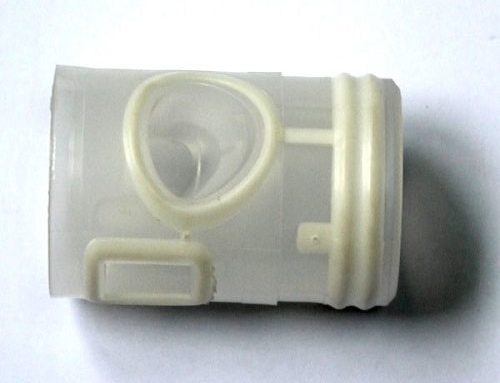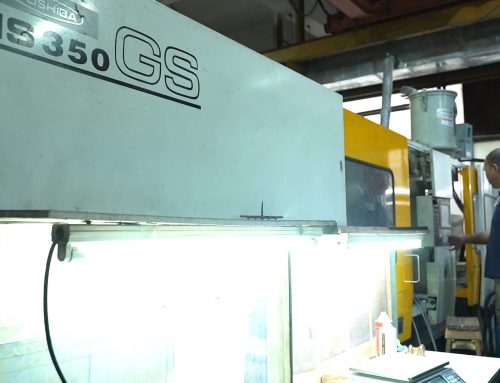Aluminum die casting mold is a widely used mold in the current stage of society. Because of its long production cycle, high investment and high manufacturing precision, its cost is relatively high, which has high requirements for service life of aluminum molding. However, due to a series of various physical factors such as materials, machining and use, it often leads to premature failure of mold and occurrence of scrapping, resulting in great wasteful consequences. After analyzing selection, design, manufacture and use of mold to gain main factors affecting service life and related precautions of aluminum die casting mold.
Material analysis of aluminum die casting mold
Effect of mold material on the life of mold is reflected in three specific aspects: whether selection of mold material is appropriate, whether material is reasonable and whether use is correct. When process of die opening is performed, surface of cavity is subjected to a large compressive stress. After thousands of times of die casting, various defects such as cracks will appear on the surface of mold. At present, material of aluminum die casting mold is H13 steel, corresponding to China mold maker grade 4Gr5MoV1Si, which has become a widely used mold material and belongs to hot work die steel with high thermal fatigue resistance, fracture toughness and thermal stability.
Factors affecting life of aluminum die casting mold
(1) Structural design: In mold design manual, there are related precautions for design of aluminum die casting mold. It should be emphasized that mold structure design needs to prevent sharp rounded corners and excessive cross-section changes as much as possible. The stress concentration caused by sharp rounded corners can reach 10 times than average stress. At the same time, it is necessary to pay attention to deformation and cracking of subsequent heat treatment due to unreasonable structural design. In order to prevent deformation and cracking of heat treatment, section size should ensure uniform shape and standard of symmetry, and blind hole should form through hole as much as possible. Process hole can be opened under necessary circumstances.
(2) Machining: Inappropriate machining tends to result in stress concentration. When finish is insufficient and machining lacks complete and uniform elimination of decarburization layer formed by rolling forging, it may cause early failure of material. At the same time, in the specific process of mold processing, thicker template can not use superposition method to ensure its corresponding thickness. In the process of processing cooling water channel, two-sided processing should focus on maintaining concentricity. If the head has a corner phenomenon and cannot be concentric with each other, cracks will occur around connected corners in actual use.
(3) Grinding and EDM: Grinding time is easy to cause local overheating on metal surface, forming high surface residual stress and tissue changes, which may cause generation of grinding cracks. At the same time, when original structure is improperly pretreated, segregation of carbides, coarse grains and insufficient tempering will lead to grinding cracks. Therefore, under the promise of ensuring the material, it should be noted that appropriate coolant is selected to control grinding process cooling. EDM can produce a white hardened layer of quenched martensite on the surface of mold after quenching and tempering. Corresponding thickness is determined by current intensity and frequency during processing.
(4) Heat treatment: Improper heat treatment is the main cause of early failure of mold. Deformation phenomenon of heat treatment is mainly caused by thermal stress and tissue stress. If stress exceeds yield strength, material will plastically deform. And if stress exceeds strength limit, part will be quenched. Aluminum die-casting molds should be important in specific aspects of heat treatment.
- Forgings should be spheroidized when they are not cooled to room temperature.
- After roughing and finishing, quenching and tempering treatment should be added.
- When carrying out quenching process, attention should be paid to heating temperature and holding time of steel to prevent austenite roughening.
- When performing heat treatment process, attention should be paid to decarburization and carbonation on the surface of cavity.
- When performing nitriding process, it should be noted that no greasy is allowed on nitrided surface.
- Between two heat treatment processes. When last temperature drops until hand can touch, next lane can be performed.
- Use static quenching method, salt furnace quenching and special fixture quenching to reduce heat treatment deformation.
- Tracking adopts advanced heat treatment equipment and technology, which can improve surface finish of mold and help control heat treatment deformation.
(5) Production operation: When injection speed of aluminum die-casting mold is been determined, corresponding speed should not be too high. If speed is too high, mold will be corroded, deposits on the cavity and core will increase. However, if speed is too low, casting will be easily defective. Therefore, minimum injection speed for aluminum die-casting molds should be 18m/s, corresponding maximum injection speed should not be greater than 53m/s, and average injection speed should be 43m/s. Casting process should be strictly controlled during specific use of mold. Within allowable range of process, casting temperature and injection speed of aluminum liquid should be lowered, which is beneficial to increase preheating temperature of mold.
Conclusion
There are many reasons for affecting actual service life of aluminum die casting mold, and they involve many specific aspects. For manufacturing industry, mold structure should be correctly designed, mold parts should be accurately manufactured, reasonable and effective heat treatment process standards should be established, mold should be used reasonably according to process specification, repaired and maintained in time, which can fully exert relevant performance of mold material and effectively improve quality and service life of aluminum mold.




